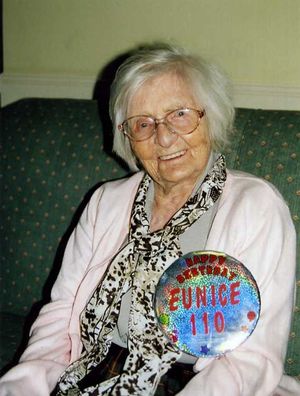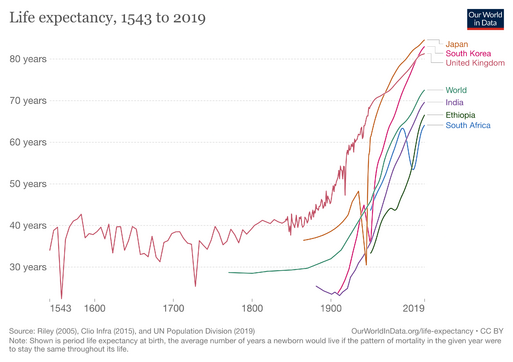Older People - An Introduction: Difference between revisions
No edit summary |
No edit summary |
||
| Line 29: | Line 29: | ||
An Australian study 2020 investigating pre-frailty and frailty in healthy, independent community-dwelling adults suggests using frailty phenotypes (unintentional weight loss, exhaustion, low physical activity levels, poor [[Grip Strength|handgrip]] strength, and slow [[10 Metre Walk Test|walking speed]]) to detect pre-frailty in younger community dwellers aged from 40–75 years<ref>Gordon SJ, Baker N, Kidd M, Maeder A, Grimmer KA. [https://www.ncbi.nlm.nih.gov/pmc/articles/PMC7060633/ Pre-frailty factors in community-dwelling 40–75-year-olds: opportunities for successful ageing.] BMC geriatrics. 2020 Dec;20(1):1-3.</ref>. | An Australian study 2020 investigating pre-frailty and frailty in healthy, independent community-dwelling adults suggests using frailty phenotypes (unintentional weight loss, exhaustion, low physical activity levels, poor [[Grip Strength|handgrip]] strength, and slow [[10 Metre Walk Test|walking speed]]) to detect pre-frailty in younger community dwellers aged from 40–75 years<ref>Gordon SJ, Baker N, Kidd M, Maeder A, Grimmer KA. [https://www.ncbi.nlm.nih.gov/pmc/articles/PMC7060633/ Pre-frailty factors in community-dwelling 40–75-year-olds: opportunities for successful ageing.] BMC geriatrics. 2020 Dec;20(1):1-3.</ref>. | ||
The following video gives 6 ways to have a healthy, longer life. | |||
{{#ev:youtube|https://www.youtube.com/watch?v=qSt8aKtpDCA|width}}<ref>Scripps Research The Science of Healthy Aging: Six Keys to a Long, Healthy Life Available from: https://www.youtube.com/watch?v=qSt8aKtpDCA (last accessed 12.11.2022)</ref> | {{#ev:youtube|https://www.youtube.com/watch?v=qSt8aKtpDCA|width}}<ref>Scripps Research The Science of Healthy Aging: Six Keys to a Long, Healthy Life Available from: https://www.youtube.com/watch?v=qSt8aKtpDCA (last accessed 12.11.2022)</ref> | ||
== Life Expectancy == | == Life Expectancy == | ||
| Line 38: | Line 38: | ||
# The rapidly growing group of ‘old old’ (85 and over) people who have a variety of typical age-related health problems (eg., arthritis, dementia and cancer) | # The rapidly growing group of ‘old old’ (85 and over) people who have a variety of typical age-related health problems (eg., arthritis, dementia and cancer) | ||
# The younger group entering the ‘65 and over’ age bracket with a larger burden of lifestyle related diseases (eg, type 2 diabetes) than previous generations. | # The younger group entering the ‘65 and over’ age bracket with a larger burden of lifestyle related diseases (eg, type 2 diabetes) than previous generations. | ||
{{#ev:youtube|v=Vrg51jT31GA|300}}<ref>ITU Digital technologies for older persons and healthy ageing.. The Evolution of Dance. Available from:https://www.youtube.com/watch?v=Vrg51jT31GA [last accessed 12.11.2022]</ref> | |||
== Digital Technologies and Ageing == | |||
The below video details "Digital technologies for older persons and healthy ageing" details how digital technologies can empower the older person.{{#ev:youtube|v=Vrg51jT31GA|300}}<ref>ITU Digital technologies for older persons and healthy ageing.. The Evolution of Dance. Available from:https://www.youtube.com/watch?v=Vrg51jT31GA [last accessed 12.11.2022]</ref> | |||
== Physiotherapy Implications == | == Physiotherapy Implications == | ||
Revision as of 23:09, 11 November 2022
Original Editor - Bhanu Ramaswamy as part of the AGILE Project.
Top Contributors - Admin, Bhanu Ramaswamy, Lucinda hampton, Lauren Lopez, Wendy Walker, Kim Jackson, Rachael Lowe, Vidya Acharya and Amrita Patro
Ageing[edit | edit source]
Ageing describes the process of growing old. There are both complicated and simple explanations:
- Gradual biological impairment of normal function, probably as a result of changes made to cells (mitotic cells, such as fibroblasts and post-mitotic cells, such as neurons) and structural components (such as bone and muscle). These changes would consequently have a direct impact on the functional ability of organs (such as the heart, kidney, and lungs), biological systems (such as the nervous, digestive and reproductive system) and ultimately the organism as a whole.
- Normal ageing is that which occurs without disease.
There are recognised age differentials between mortality in the developed and the developing countries, however on average, the older adult group span a 20 - 30 year period.
An arbitrary division exists with three ages of ‘old’, a starting point for considering the span of old age[2][3][4]
- Between 60 – 75 years = young old
- Between 75 – 85 years = old
- Those 85+ are considered the frail older population
As populations age, it will be of interest to see if these age bands alter. The divisions confirm older people to be a varied group requiring consideration according to their needs.
In 2001 policy from the United Kingdom in the form of the National Service Framework for Older People[5] categorised the three cohorts broadly as:
- Entering old age: People from 50 to the official retirement age who have completed their career. They are supposed active and independent and many remain so into late old age.
Goals of health and social care policy: To promote and extend healthy active life, and compress morbidity (the period spent in frailty and dependency before death). - Transitional phase: A group in transition between healthy, active life and frailty, often occurring in the seventh or eighth decades, but can occur at any stage.
Goals of health and social care policy: To identify emerging problems pre-crisis, ensuring effective response that prevents crisis and reduces long-term dependency. - Frail older people: A vulnerable group due to health problems e.g. stroke or dementia, social care needs or a combination of both. Frailty often experienced in late old age, so services people should be designed with their needs in mind.
Goals of health and social care policy: To anticipate and respond to problems, recognising the complex interaction of physical, mental and social care factors which can compromise independence and quality of life.
An Australian study 2020 investigating pre-frailty and frailty in healthy, independent community-dwelling adults suggests using frailty phenotypes (unintentional weight loss, exhaustion, low physical activity levels, poor handgrip strength, and slow walking speed) to detect pre-frailty in younger community dwellers aged from 40–75 years[6].
The following video gives 6 ways to have a healthy, longer life.
Life Expectancy[edit | edit source]
Human life expectancy has increased dramatically[8]. Estimates suggest that in a pre-modern, poor world, life expectancy was around 30 years in all regions of the world. Since 1900 the global average life expectancy has increased by more than 50%, and is now above 70 years. The imbalance of life expectancy is great across and within countries. eg in 2019 the country with the lowest life expectancy is the Central African Republic with 53 years, in Japan life expectancy is 83.[9]
The ageing of the population will have far-reaching implications for society. Direct challenges for the health system will consist of: changing health profiles; increased demand for health service use; rising health costs. The two main challenges are:
- The rapidly growing group of ‘old old’ (85 and over) people who have a variety of typical age-related health problems (eg., arthritis, dementia and cancer)
- The younger group entering the ‘65 and over’ age bracket with a larger burden of lifestyle related diseases (eg, type 2 diabetes) than previous generations.
Digital Technologies and Ageing[edit | edit source]
The below video details "Digital technologies for older persons and healthy ageing" details how digital technologies can empower the older person.
Physiotherapy Implications[edit | edit source]
For physiotherapists working with the older population, one goal is the facilitation of an individual's later years to be active and a time of good health, although for some people it is a period of loss of health, wealth and status due to retirement from work, or loss from bereavement.
See also Theories of Ageing
Resources[edit | edit source]
There are several resources with interactive graphics to view different data and statistics on ageing health and populations:
- Life Expectancy by Max Roser (2015).
- United Nations Global Health Observatory (GHO) data pages which give health data and general statistics about each country.
- The Gapminder graphic which illustrates the demographic changes of global populations over the age of 60, and their pattern of growth from 1950 to a predicted older population in 2050.
- Help Age International pages.
References[edit | edit source]
- ↑ Ted ed Why do our bodies age. Available from: https://www.youtube.com/watch?v=GASaqPv0t0g (last accessed 23.5.2019)
- ↑ World Health Organisation. Health situation and trend assessment: elderly population. Accessed 26 September 2018.
- ↑ World Health Organisation. Health statistics and information systems: Proposed working definition of an older person in Africa for the MDS Project. Accessed 26 September 2018.
- ↑ The CALAS Team at Tel Aviv University: Cohen-Mansfield J, Shmotkin D, Blumstein Z, Shorek A, Eyal N, Hazan H. The Old, Old-Old, and the Oldest Old: Continuation or Distinct Categories? An Examination of the Relationship between Age and Changes in Health, Function, and Wellbeing. Int J Aging Hum Dev2013; 77 (1): 37-57.
- ↑ Department of Health (2001). National Service Framework for Older People. London, HMSO. Accessed 26 September 2018.
- ↑ Gordon SJ, Baker N, Kidd M, Maeder A, Grimmer KA. Pre-frailty factors in community-dwelling 40–75-year-olds: opportunities for successful ageing. BMC geriatrics. 2020 Dec;20(1):1-3.
- ↑ Scripps Research The Science of Healthy Aging: Six Keys to a Long, Healthy Life Available from: https://www.youtube.com/watch?v=qSt8aKtpDCA (last accessed 12.11.2022)
- ↑ Lutz W, Sanderson WC, Scherbov S. Global and regional population ageing: How certain are we of its dimensions? Population Ageing. 2008; 1 (1): 75-97.
- ↑ Our world in data Life expectancy Available:https://ourworldindata.org/life-expectancy (accessed 11.11.2022)
- ↑ ITU Digital technologies for older persons and healthy ageing.. The Evolution of Dance. Available from:https://www.youtube.com/watch?v=Vrg51jT31GA [last accessed 12.11.2022]








